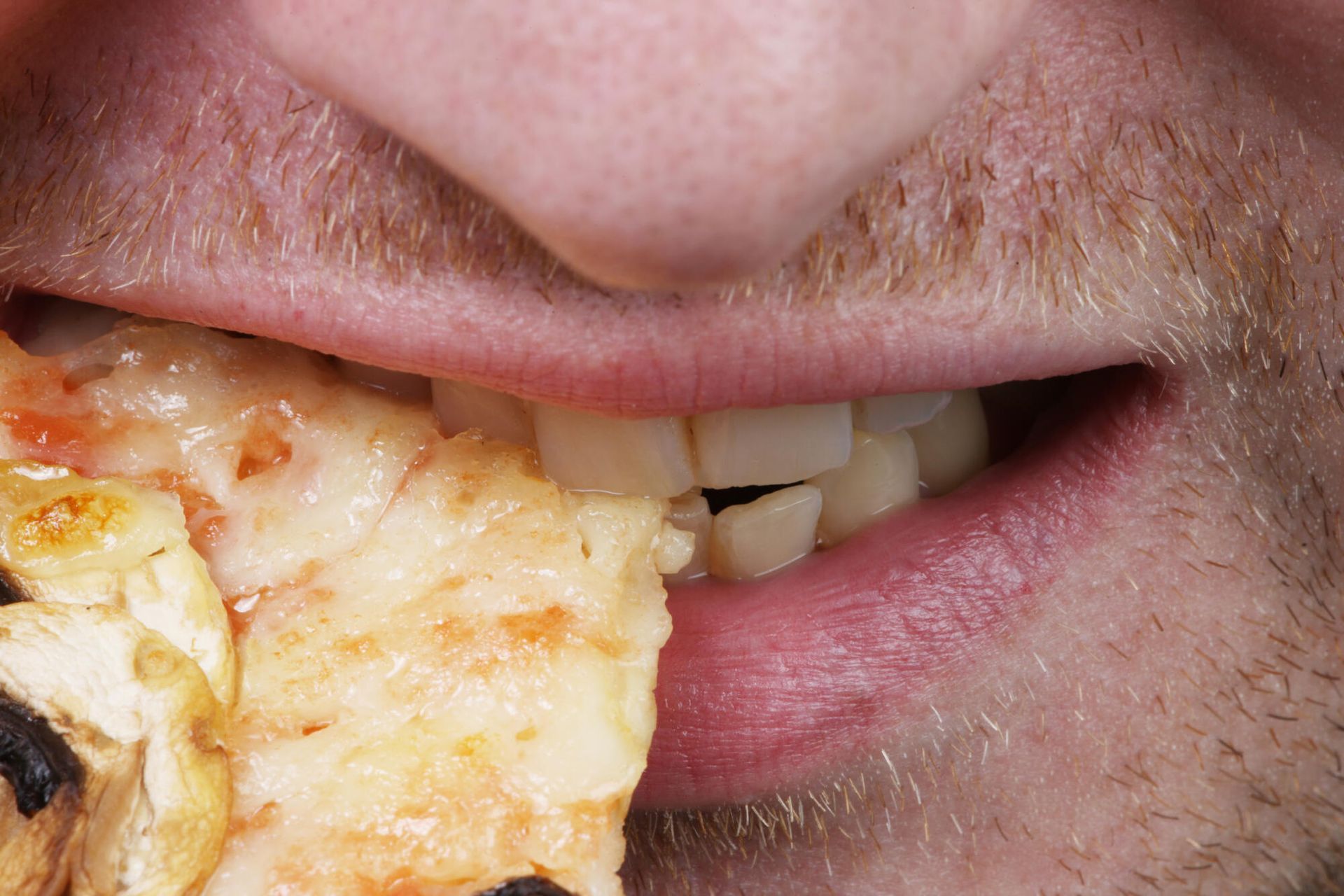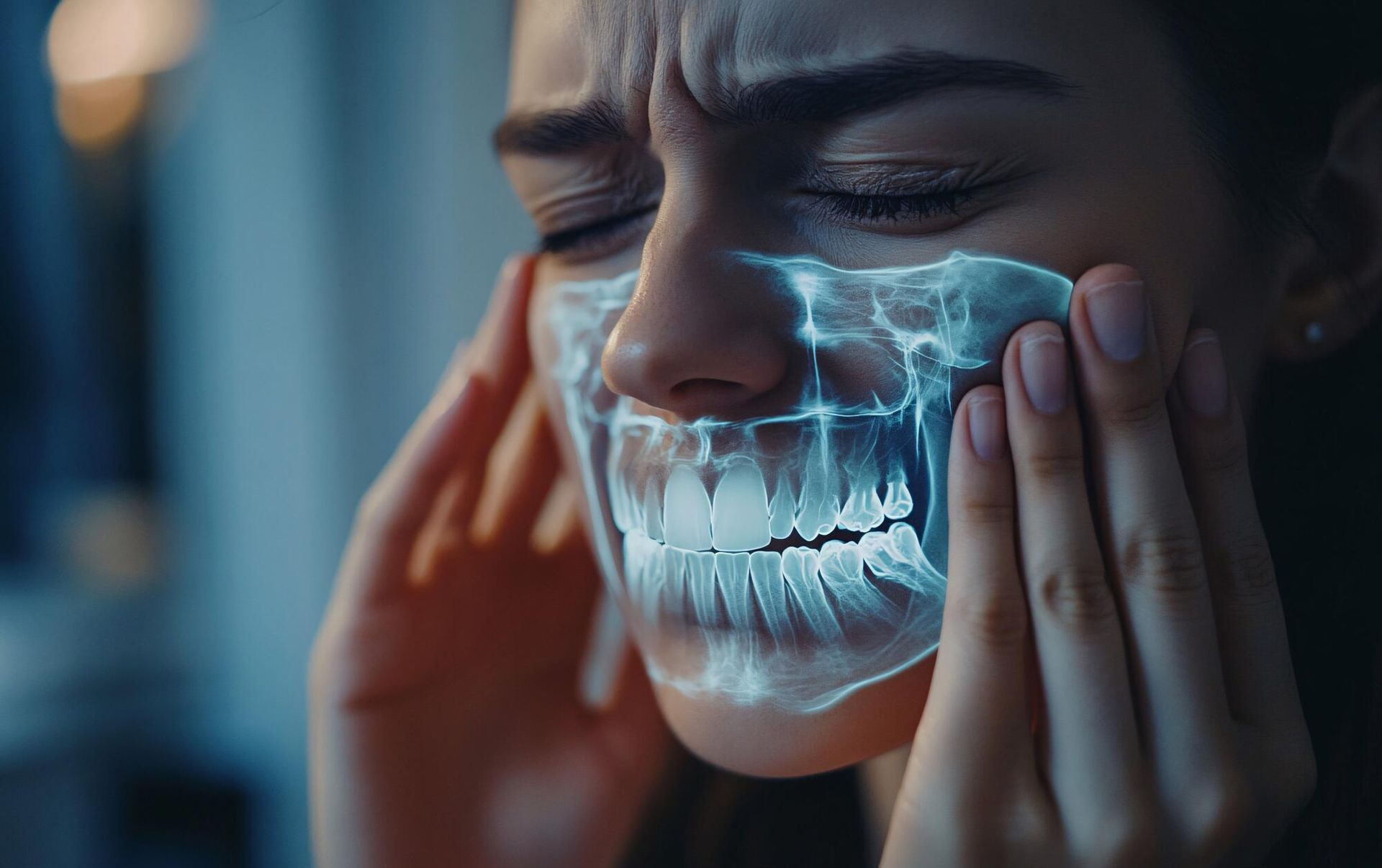What Should You Do About TMD and TMJ Tooth Pain?
If you're experiencing TMJ tooth pain, there are several things you should try. Keep reading to learn all about treatment for TMJ and TMD in Burke, VA.

We've all been there: the second you experience mild tooth pain, you cross your fingers and hope it goes away on its own.
Unfortunately, this doesn't always work when TMJ tooth pain is the culprit. All of a sudden, you may find yourself dealing with migraines, a locked jaw, neck and back pain, ringing ears, and insomnia. What gives?
Dealing with TMD is no joke, as this condition can quickly spiral out of control if you don't address its root causes. If you're struggling with TMJ-related tooth or jaw pain, here's what you should know about its most common culprits, what you can do at home, and why seeing a pro may be your best bet.
What Is TMJ/TMD?
TMJ refers to the temporomandibular joint. This is a complex joint that connects your skull and your lower jaw, with one joint on either side of your head between your cheek and ear. The TMJ is what allows you to move your jaw.
TMD, or temporomandibular joint disorder, is a condition in which TMJ dysfunction causes pain or discomfort. TMD can appear in many different ways, and the symptoms aren't always limited to the area around your jaw. Here are a few things you may experience with TMD:
- Jaw pain, especially when opening the jaw
- Limitations to how far you can open the jaw
- Facial pain
- Pain that seems to come from the back molars
- Worn down or fractured teeth
- Headaches or migraines
- Earaches
- Neck, shoulder, or upper back pain
- Difficulty sleeping
- Clicking or popping sounds when moving the jaw
- Dizziness
- Tinnitus, or the feeling that your ears are ringing
Because these symptoms vary, it's easy for patients to self-diagnose TMD as something else. Visiting a TMD specialist can help you understand whether your discomfort or pain likely comes from TMJ.
What Causes TMJ Tooth Pain?
Why do some people get TMJ pain but not others? Disorders of the TMJ aren't often caused by injuries or trauma, so it can be hard to pinpoint the smaller behaviors that spark sudden pain.
Often, TMJ pain is an overuse injury. Repeated motion as you close your teeth together can put stress on the joint.
This is more common with certain behaviors, including things like clenching your teeth in stressful situations or nighttime tooth grinding. Poor posture when sitting or sleeping can increase your risk of TMD. Bad habits like constant gum-chewing or frequent nail biting can also create TMJ pain.
A poor bite that affects the mechanics of your jaw can put additional strain on your teeth. When your jaw is out of alignment, it can force the muscles of your jaw to work harder with each movement.
In addition, certain conditions can make you more likely to experience TMD. Arthritis, autoimmune diseases, and infections can increase your risk. Women are also more likely to get TMD than men.
What TMD Treatments Can You Try at Home?
Your TMJ treatment will always depend on the cause(s) of your pain. We recommend addressing a few common culprits first to see if it gets you some tooth pain relief.
Fix Your Posture
If you haven't done so already, make sure you're using an ergonomic setup at your desk or wherever you work. Poor spinal alignment can put extra pressure on the jaw, worsening your TMD symptoms.
Avoid sleeping on your stomach or side as much as possible. This can put extra pressure on the TMJ. Instead, try training yourself to sleep on your back.
Avoid Over-chewing
If you're always exercising your jaw by chewing gum, pens, ice, or your nails, lips, or cheeks, it's time to stop! Biting down repeatedly throughout the day isn't good for the TMJ.
While you're experiencing TMJ pain, it may also help to stop eating chewy foods. Tough meat, bagels, and hard candies or nuts may aggravate your symptoms.
Try TMD Exercises
Physical therapy can be a great way to ease some of the pain from TMJ. The right exercises can help you reduce the tension in your jaw and strengthen the muscles around the joint.
Use a Mouthguard
If you struggle with nighttime bruxism, consider sleeping with a mouth guard. This makes it easy to protect your teeth from clenching.
You can find mouthguards over the counter, but it's often better to visit a TMJ dentist for a custom fit to ensure your comfort.
Try Hot/Cold Therapy
Ice and hot packs can help you relieve tension around the TMJ. Where ice packs reduce pain and inflammation, hot packs can help you relax and increase your blood flow, promoting healing.
How Can a Specialist Treat TMD?
If you've tried the tactics above to no avail, seek professional treatment! An expert can often help you address stubborn TMJ pain.
Solutions start with common tactics like custom night guards and short-term muscle relaxers, but they don't stop there.
When TMD stems from a misaligned bite, for example, a specialist can help you diagnose and address the dysfunction. TMD dentists can also measure the muscle activity around your bite, allowing them to pinpoint the cause of your pain to reduce clenching and grinding.
Here at Dental Care Burke, we also offer dental TENSing, a treatment that helps with inflammation and pain by relaxing the muscles around the TMJ.
Not only can these dental treatments help you address pain or discomfort, but they can also protect your teeth from premature wear.
Treat Your TMD Today
If you're struggling with TMJ tooth pain, there's plenty you can do at home to address possible root causes. From adjusting your posture to ditching chewing gum, simple habit changes may make a world of difference.
When you can't treat your pain on your own, or when the pain is severe, that's where we come in.
Our team is proud to provide personalized TMD care for patients throughout the Burke area and beyond. We know how frustrating and painful this condition can be, which is why we offer in-depth TMD consultations to find the root cause of your TMJ dysfunction. To learn more, contact us with questions or make an appointment today.












